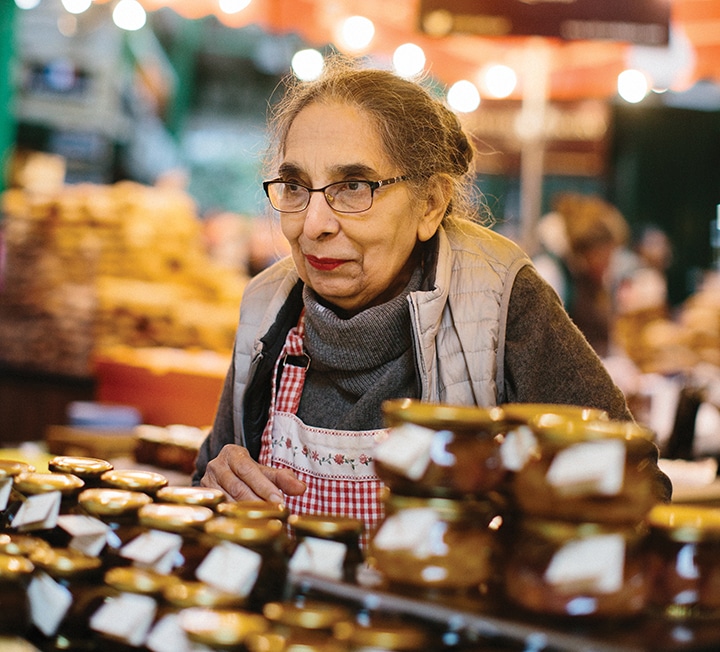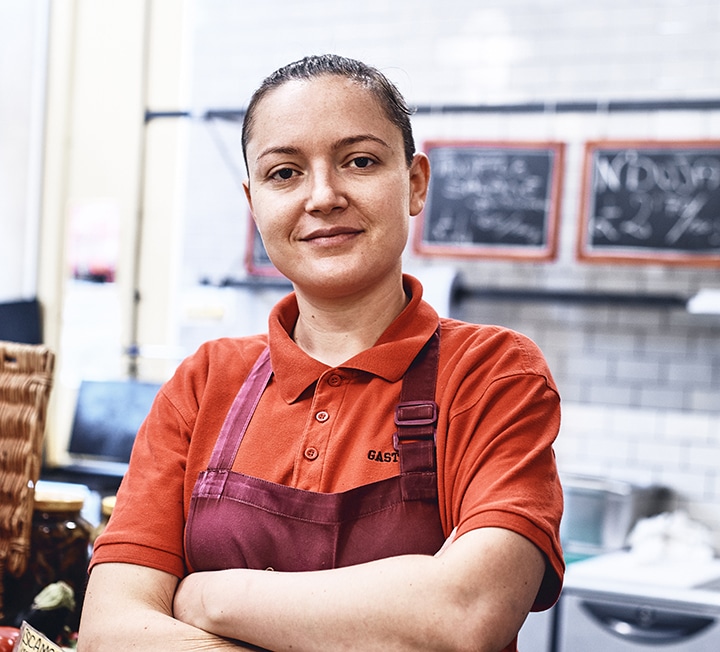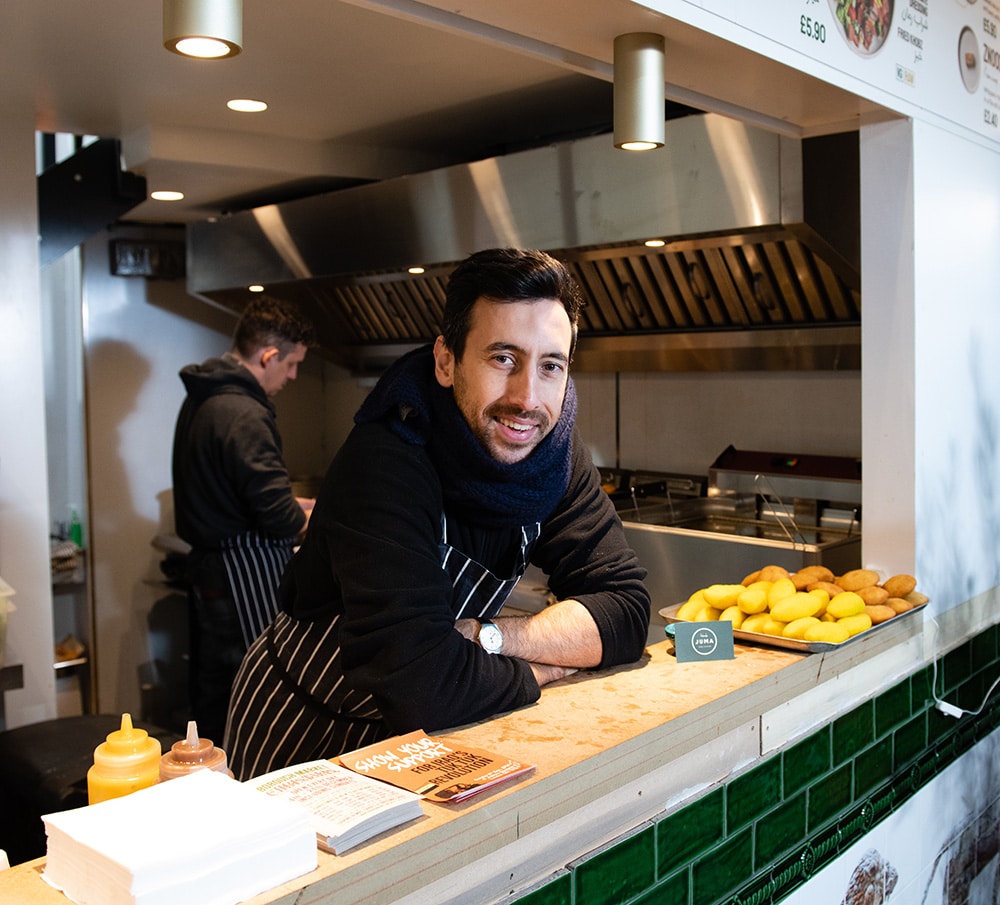A view from the stalls: Richard Bramble
Ten insights into life at Borough Market from the artist behind Richard Bramble Collection
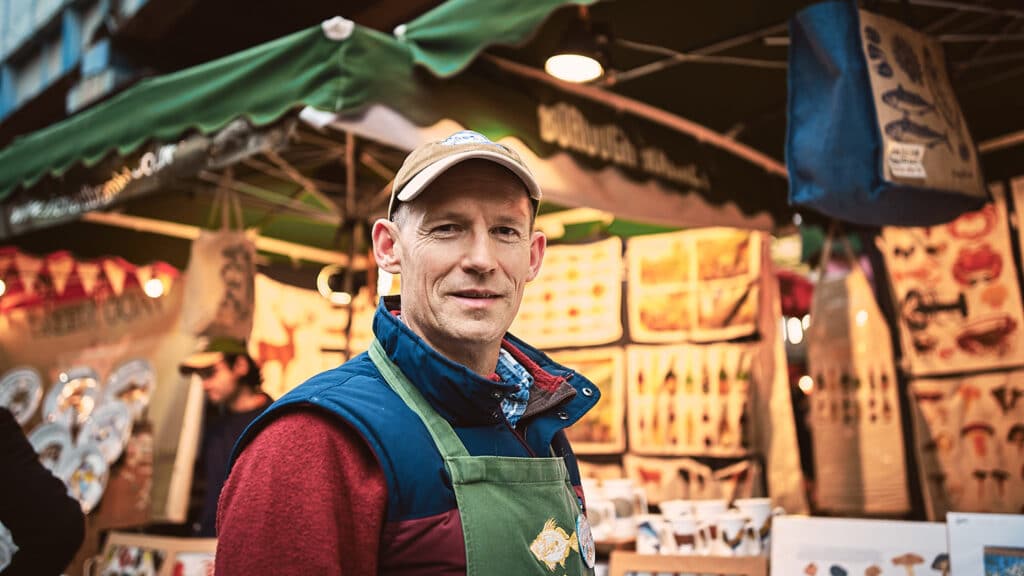

“I THINK FOOD HAS ALWAYS BEEN IMPORTANT TO ME, EVEN IF I DIDN’T NECESSARILY REALISE IT AT THE TIME”
Interview: Viel Richardson / Image: Christopher L Proctor
1. I have been trading here with Richard Bramble Collection for 20 years now – since the very beginning of the retail market. At the time, I was creating a series of paintings of Michelin starred chefs, which I published in a book along with their signature recipes. I was at Nico Ladenis’s restaurant Chez Nico when Fred Foster from Turnips came in, delivering vegetables. He liked my work and said that they were starting a market at Borough and he thought the customers would be interested in my food work. I’ve been here ever since.
2. I try to really capture the essence of an ingredient. I thoroughly research every subject. If I’m painting a fish, I use the knowledge I’ve gained from fishing and diving. Along with truly understanding how a fish moves, my skill in the graphic aspect is to capture the colours of, for example, an iridescent, silvery fish. I am trying to create something that is evocative of the spirit of that fish. At a food festival, one of my john dory dinner plates was once dive-bombed by a seagull. Quite a compliment. And the plate didn’t break!
3. Family holidays were spent in the Hebrides or Dorset, cooking what you foraged or caught. Looking back, this is where my passion for ingredients and cooking comes from. It also developed my fascination with our native wildlife.
4. When I started, you never saw a monkfish with a head on because they can be very dangerous when caught, so the heads were usually cut off straight away at sea. Les Salisbury from Furness Fish Markets brought in a complete one for me so I could paint it. Now you’ll often see them display a whole monkfish. It’s a great attraction!
5. I trained as a painter, so working with ceramics was not a planned path. It came about when a number of chefs asked me to create plate designs for their restaurants. I made a plate with an aubergine design for Gordon Ramsay’s first restaurant, Aubergine. That led to the start of my ingredients collection on ceramics.
6. The lines I have created and the way I have worked with the different pieces – the table mats, textiles and boards – often developed here on the stall, from talking to customers.
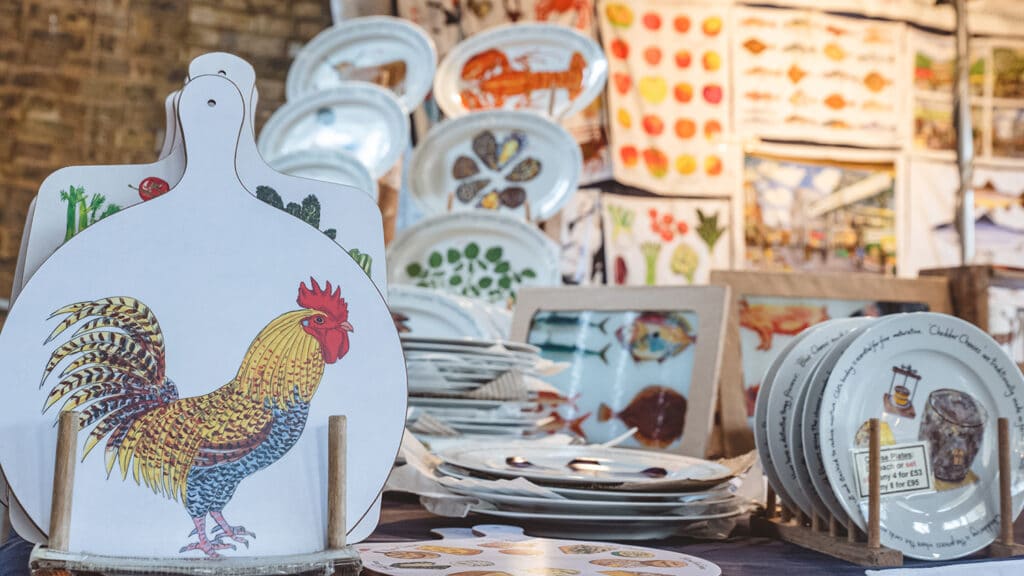
7. I have always painted and drawn. I think food has always been important to me too, even if I didn’t realise it at the time. I would go out fishing or gathering a few mushrooms. It was nothing fancy and it felt like a really natural thing to do. Looking back, I can see how that played into what I’m doing today.
8. Art and cooking are both creative processes; hand-eye coordination activities, underlined by feeling and knowledge. Combining the two worlds has been a natural process for me. When I see fresh and interesting ingredients sold by my fellow traders at the Market, it inspires me to paint them and experiment with them in my cooking.
9. Most of my work is done with pen and ink and watercolour. I then create a screen print from the originals using 12 or more colours, which is applied to the porcelain and fired into the glaze. Most ceramics are printed using only four colours; using 12 or more means the colours in the ceramics are often even closer to what I was trying to achieve than the originals.
10. The great thing about working with ceramics and textiles is that I’m creating affordable pieces of art for everyone; art that people use and interact with. I love the sense of community at the Market. I love talking to people about the piece they are buying, the significance, if it is for their kitchen or a gift. I can add an inscription to the piece while they wait – a name, a date, or a message – which makes the interaction even more unique. That connection is not something many artists get. A conversation with a customer or collector at the Market can be the highlight of my day.
